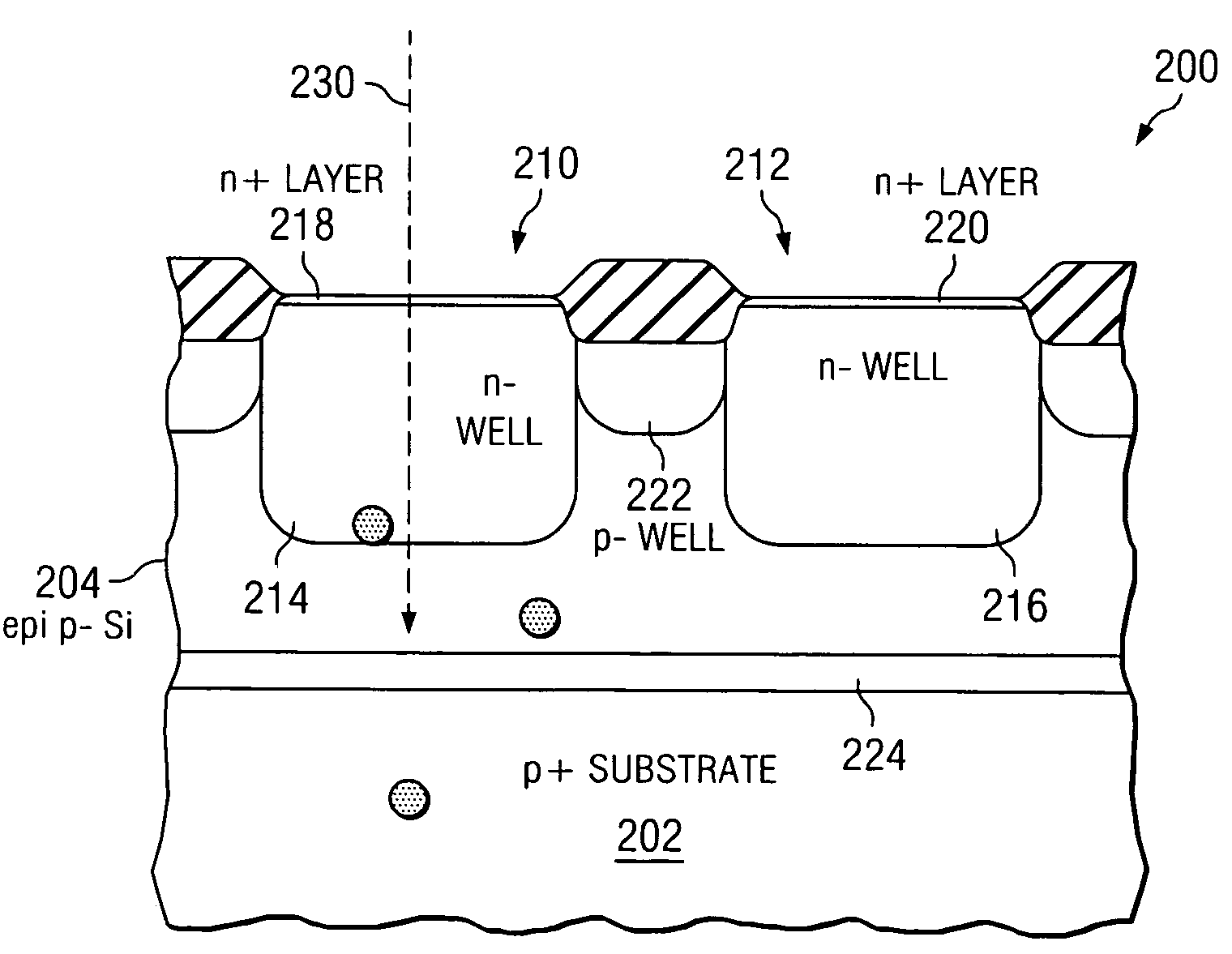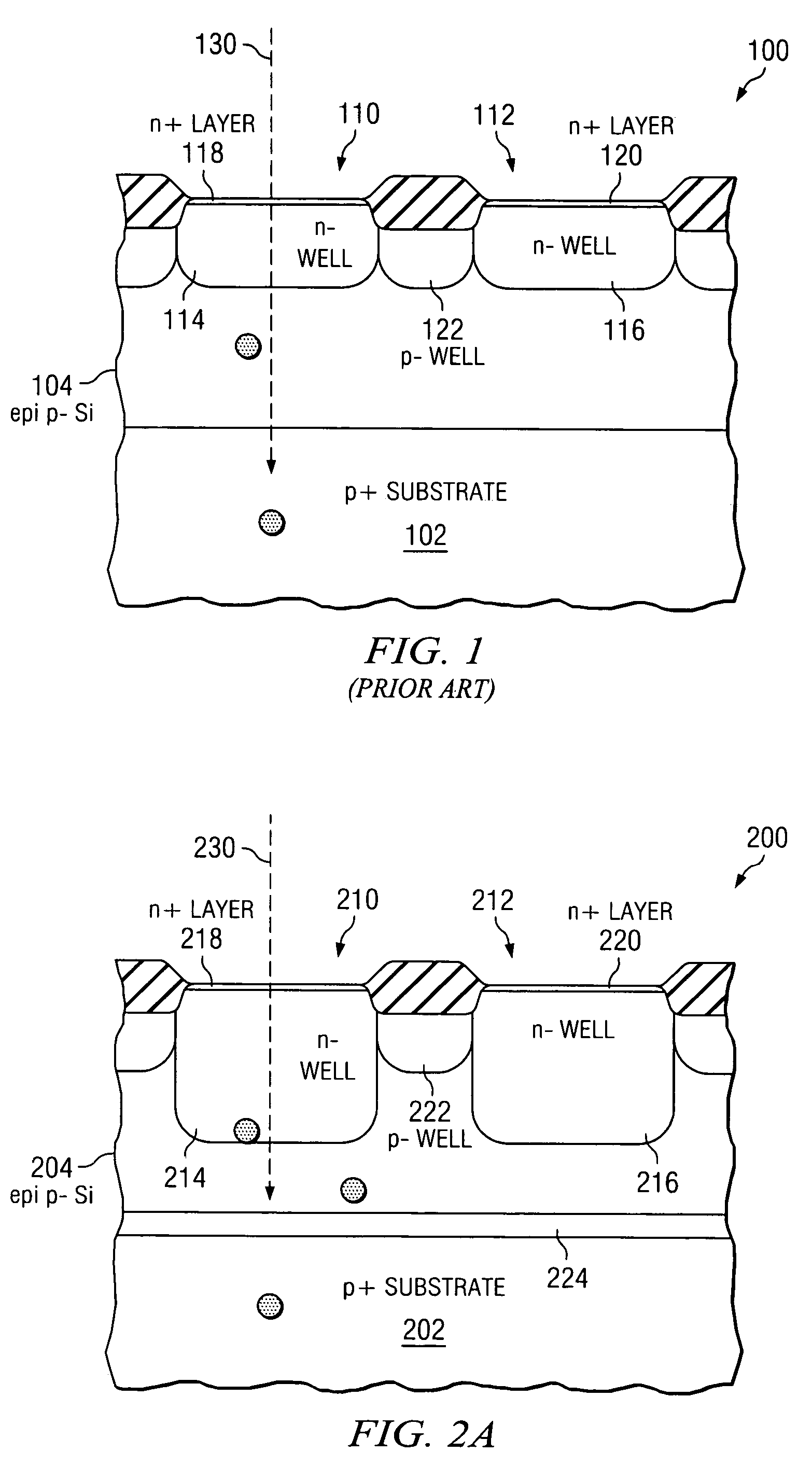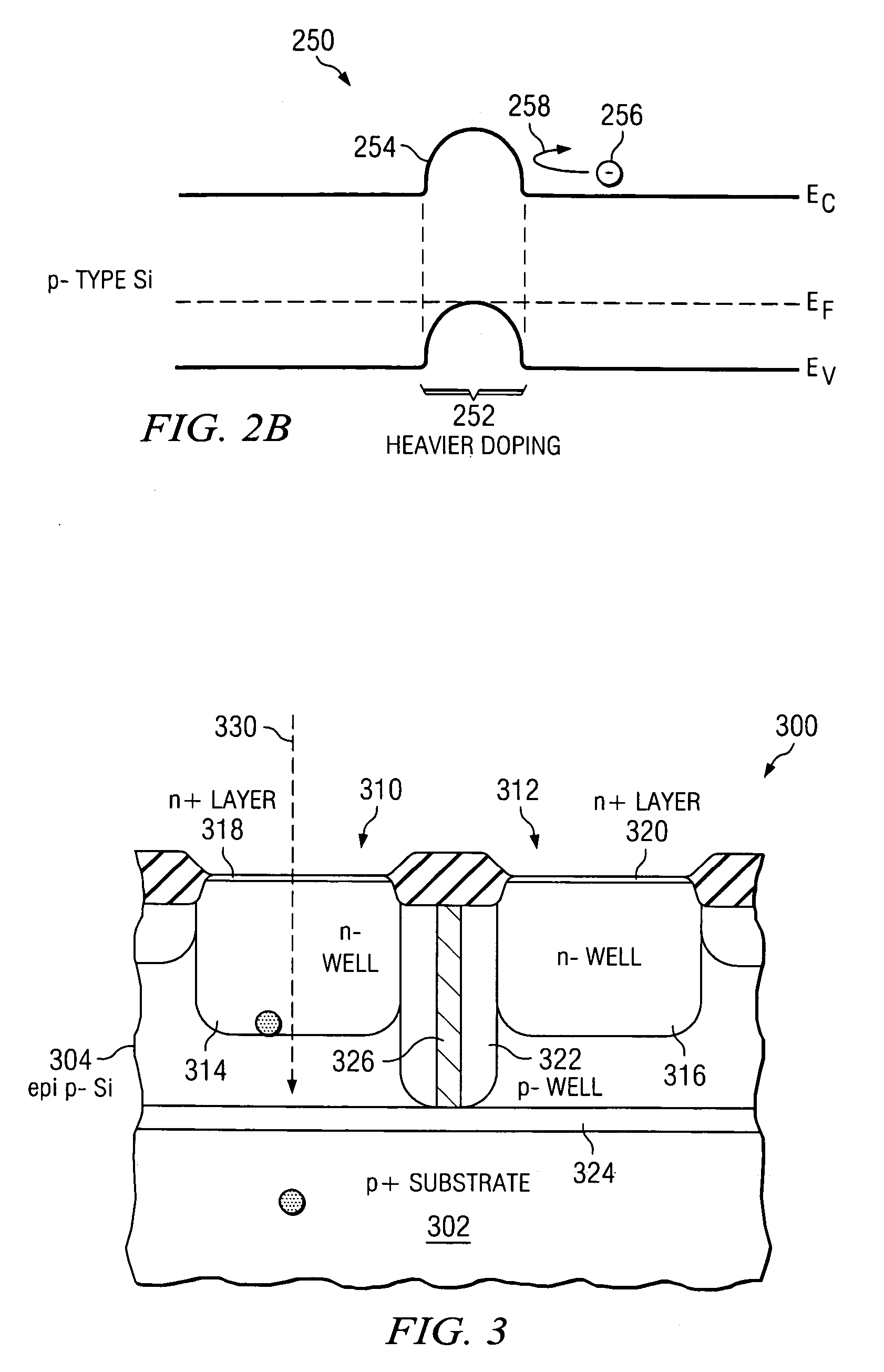Reduced crosstalk CMOS image sensors
a crosstalk reduction and image sensor technology, applied in the field of reducing crosstalk cmos image sensors, can solve the problems of increased crosstalk in the far-red to infrared wavelength range, reduced sensitivity of cmos (complementary metal-oxide semiconductor) image sensors, and large epi (epitaxial) layers, so as to prevent lateral diffusion of electrons, reduce crosstalk, and reduce the sensitivity
- Summary
- Abstract
- Description
- Claims
- Application Information
AI Technical Summary
Benefits of technology
Problems solved by technology
Method used
Image
Examples
Embodiment Construction
[0012]Exemplary embodiments in accordance with the invention provide a CMOS image sensor that has high sensitivity and low crosstalk, particularly at far-red to infrared wavelengths, and to a method for fabricating a CMOS image sensor.
[0013]FIG. 1 is a schematic cross-sectional side view of a portion of a CMOS image sensor that is known in the art to assist in explaining the present invention. The CMOS image sensor is designated by reference number 100 and generally includes substrate 102, epitaxial (epi) layer 104 above substrate 102 and a plurality of pixels (only two pixels 110 and 112 are illustrated in FIG. 1) arranged in an array and extending into epi layer 104. Substrate 102 and epi layer 104 are both composed of silicon semiconductor material; however, substrate 102 is made of P+ (highly doped P-type) semiconductor material), and epi layer 104 is made of P− (lightly doped P-type) semiconductor material.
[0014]Pixels 110 and 112 include photodiode n-wells 114 and 116, respect...
PUM
 Login to View More
Login to View More Abstract
Description
Claims
Application Information
 Login to View More
Login to View More - R&D
- Intellectual Property
- Life Sciences
- Materials
- Tech Scout
- Unparalleled Data Quality
- Higher Quality Content
- 60% Fewer Hallucinations
Browse by: Latest US Patents, China's latest patents, Technical Efficacy Thesaurus, Application Domain, Technology Topic, Popular Technical Reports.
© 2025 PatSnap. All rights reserved.Legal|Privacy policy|Modern Slavery Act Transparency Statement|Sitemap|About US| Contact US: help@patsnap.com



